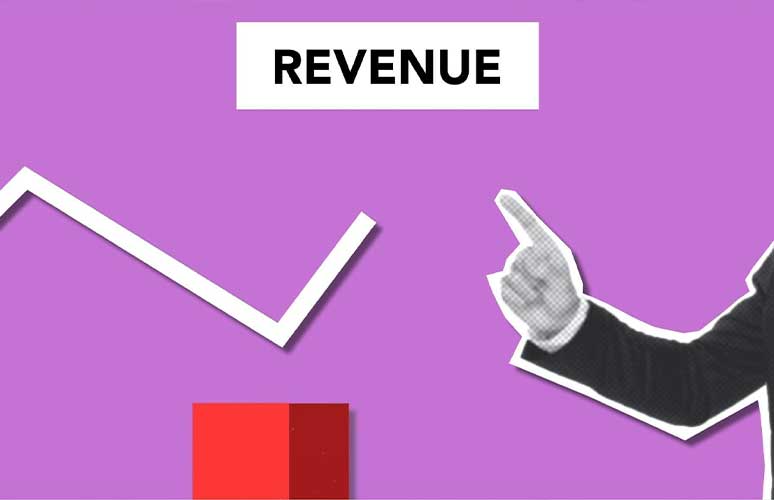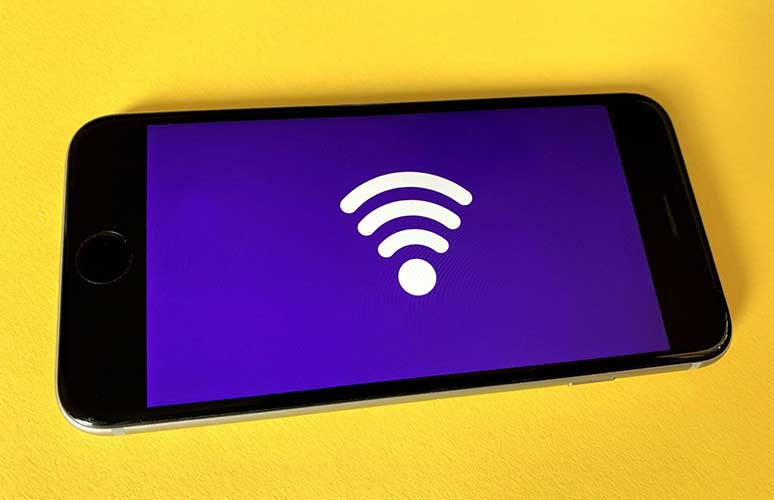Acronyms run rampant in the telecommunications industry, and it can be challenging to keep them all straight!
Telecom Acronyms and their Meanings
Today, we’re covering 70 of the most common telecom acronyms, discussing what they stand for, and providing a brief overview of each one.
1. AI – Artificial Intelligence
Artificial intelligence refers to technology that can mimic human intelligence to perform various tasks.

2. AIOps – Artificial Intelligence for IT Operations
Artificial intelligence for IT operations uses machine learning, big data analytics, and other forms of AI technology to automate the process of recognizing and resolving common issues in IT.
3. API – Application Programming Interface
Application programming interfaces allow businesses to open their applications’ functionality and data to internal departments and external third-party developers. This enables products and services to communicate and use each other’s data and functionality.
4. BAFO – Best and Final Offer
A vendor’s BAFO is a revised offer containing its most favorable terms. Companies deciding between multiple potential vendors will often ask for their BAFOs with the goal of earning better pricing and additional concessions.
5. BI – Business Intelligence
Business intelligence is a way of leveraging software and services to obtain data and use it to create actionable insights. These insights can then play a role in a company’s business decisions. BI also refers to various tools that provide business insights using available data.
6. BRI – Basic Rate Interface
BRI is an older technology that was typically used by individuals and small businesses to transmit video. It has two B channels, or bearer channels, which carry data and voice services, and one D channel, or data channel, which carries signaling and controlling data.
7. BYOD – Bring Your Own Device
BYOD refers to the trend of allowing employees to bring their own devices to work and connect them to work-related systems and organizational networks.
8. CLEC – Competitive Local Exchange Carrier
CLECs are large telecom carriers that compete with ILECs (Incumbent Local Exchange Carriers). CLECs were mainly established after the 1996 Telecommunications Act and started by leasing copper lines from ILECs. Today, many offer a wide range of services and have their own fiber-optic networks.
9. CO – Central Office
The term “central office” typically refers to the location serving as the telephone company’s central location for a particular area that houses phone switches and the data network sold by the provider. In the field of telecommunications specifically, a CO is a building where business and subscriber home lines are connected on a local loop that is either copper of fiber optics. COs can typically switch calls locally or to long-distance offices.
10. CPE – Customer-Provided Equipment/Customer Premises Equipment
CPE is telecom or IT equipment owned by the company and kept at its physical location rather than at the supplier’s central office.
11. CPO – Chief Procurement Officer
An organization’s CPO runs its procurement department. One of the CPO’s most important responsibilities is to oversee the acquisition of various goods and services.
12. DDoS – Distributed Denial-of-Service
DDoS is typically referenced in terms of a DDoS attack, which is a malicious attack that overwhelms its target (usually a server or network) with internet traffic in an attempt to cause a crash.
13. DID – Direct Inward Dialing
Direct inward dialing allows businesses to establish phone numbers that send callers directly to a specific individual or department. DID numbers are usually ordered in blocks of 20, 100, or 1000.
14. DPO – Data Protection Officer
An organization’s Data Protection Officer has multiple responsibilities related to the processing of personal data and compliance with the General Data Protection Regulation. Organizations that deal with personal data of people in the European Union must appoint a DPO when that data is processed by public authorities, if the organization completes regular large-scale monitoring, or if it handles large-scale special data categories.
15. DSL – Digital Subscriber Line
DSL is a type of internet connection. It provides internet access through the use of a modem and telephone lines and does not interfere with voice services.
16. DS0 – Digital Signal Zero
DS0 is the standard transmission rate of 64 Kbps for digital telecommunications services.
17. EBC – Executive Briefing Center
A telecom vendor’s Executive Briefing Center is an impressive facility where sales reps invite potential customers to display the value the vendor can provide to the customer’s business.
18. ETF – Early Termination Fee
An ETF is a penalty charge that applies when a customer ends a contract before the originally agreed-upon date. This is also sometimes called TLA-Termination Liability Assessment
19. FCC – Federal Communications Commission
The Federal Communications Commission is an independent United States government agency. It regulates both interstate and international communications by cable, wire, satellite, television, and radio in all 50 states, as well as US territories and the District of Columbia.
20. GDPR – General Data Protection Regulation
The General Data Protection Regulation (GDPR) is a 2018 European law regarding data privacy and security. It applies to any organization that collects and processes the personal data of people in the European Union.
21. GSA – General Services Administration
The GSA helps to manage and support the basic functions of federal agencies. It focuses on real estate, acquisition, and technology services. Telecom vendors will occasionally attempt to cite a “GSA violation” as a ploy to deny customers’ requests for various concessions.

22. ILEC – Incumbent Local Exchange Carrier
ILECs are massive telecom service providers that originally provided service to local areas before the unbundling that took place in 1996 as a result of the Telecommunications Act. Verizon, AT&T, and CenturyLink are all Incumbent Local Exchange Carriers.
23. IoT – Internet of Things
The Internet of Things refers to numerous types of physical objects that connect to the internet. These internet-connected objects have embedded sensors that enable them to collect and exchange data in real-time. Examples include smart thermostats, refrigerators, watches, lights, locks, and headphones.
24. IP – Internet Protocol
The Internet Protocol establishes a set of standards for addressing and routing data over the internet.
25. IT – Information Technology
IT is the use or study of systems, particularly telecommunications and computers, for the purpose of sending, retrieving, and storing information.
26. ITAM – Information Technology Asset Management
IT Asset Management ensures that an organization’s assets are tracked and used appropriately. It makes sure that all tangible and intangible items are deployed, upgraded, maintained, and disposed of as needed.
27. KPI – Key Performance Indicator
KPIs are quantifiable measures that organizations use to evaluate their performance and success.
28. LEC – Local Exchange Carrier
An LEC is a category of landline telephone services that operates within a local area.
29. M2M – Machine to Machine
The acronym M2M refers to direct communication between devices using any wired or wireless communications channel.
30. MACD – Move, Add, Change, or Deletion
MACD is a service that provides moves, adds, changes, and deletions (or disconnects) of network hardware, software, and services.
31. MARC – Minimum Annual Revenue Commitment
A MARC is the amount of money an organization has committed to spend with a vendor on a monthly or yearly basis.

32. MDM – Mobile Device Management
MDM is a type of software that facilitates the implementation and control of policies on mobile devices like smartphones and tablets.
33. MFN – Most Favored Nation
An MFN clause in a contract (also called a prudent buyer clause, non-discrimination clause, and most favored customer clause) means that the supplier agrees not to offer a better deal to another customer unless it provides the same terms to the original customer as well.
34. ML – Machine Learning
Machine Learning is when computer systems are developed and used to learn and adapt without being explicitly instructed regarding how to do so. Instead, they learn from data patterns using statistical models and algorithms.
35. MPLS – Multiprotocol Label Switching
MPLS is a type of networking technology that routes traffic based on predetermined labels instead of network addresses. For example, traffic that is labeled as “critical” (such as video calls, which require real-time updates) will be routed across faster paths to improve network performance.
36. MPOE – Minimum Point of Entry
The MPOE is where the customer’s responsibility begins and the carrier’s ends; it’s where a telecom supplier’s wiring enters or crosses a building.
37. MVC – Minimum Volume Commitment
An MVC is essentially the same as a MARC. It is a requirement for a minimum amount of usage or spending with a supplier during a specified period of time.
38. NDA – Non-Disclosure Agreement
NDAs are documents that contain an obligation to protect a party’s confidential information. They can be mutual or unilateral. In the telecom field, most non-disclosure agreements are mutual (MNDA).
39. NLP – Natural Language Processing
NLP is a branch of AI that aims to give computers the same ability to understand language as humans.
40. NPA – Numbering Plan Area
NPAs are more often referred to as area codes. They are three-digit numbers that identify phone service regions.
41. NPV – Net Present Value
NPV is a figure that represents an organization’s return on investment for a project, consisting of the current cash flow value at the project’s required rate of return in comparison to the organization’s initial investment.

42. PBX – Private Branch Exchange
A PBX is a phone system that manages internal communications as well as incoming and outgoing phone calls.
43. POC – Proof of Concept
A proof of concept demonstrates telecom products and services so that potential customers can ensure they are a good fit for the company’s needs. POCs provide the opportunity to use the vendor’s technology in a controlled environment and test out different use cases.
44. POTS – Plain Old Telephone Service
POTS is the traditional voice transmission phone system, and it uses copper wires. Many businesses still use POTS for landlines, fax machines, and certain types of alarms.
45. PRI – Primary Rate Interface
PRI is a type of T1 transmission technology for voice services. It consists of 23 voice channels (or in some rare cases, 24 voice channels) that support calls and one data channel for features like caller ID.
46. PSTN – Public Switched Telephone Network
PSTN is a telecom network that provides the infrastructure and service needed for public voice communications.
47. QoS – Quality of Service
QoS uses technologies and mechanisms on a network to control traffic and ensure that critical applications perform well, even with limited network capacity. It allows organizations to adjust overall traffic by prioritizing certain applications and is commonly used for VoIP (Voice over Internet Protocol), videoconferencing, and streaming media.
48. RBOC – Regional Bell Operating Company
This term refers to the seven companies that were created when AT&T was court-ordered to split in 1984. These companies are also called “Baby Bells.”
49. RFI – Request for Information
A Request for Information is a brief preliminary document, often sent out before an organization’s RFP, that seeks to gain a fuller understanding of the market and what vendors have to offer.
50. RFP – Request for Proposal
Requests for Proposal specify organizations’ current telecom situations, needs, and pain points. RFPs are sent to potential vendors, who then respond with customized proposals.
51. RFQ – Request for Quote
RFQs are used when an organization knows precisely what it wants and simply desires to know how much various vendors will charge for its stated requirements.

52. ROI – Return on Investment
ROI is used to determine how profitable an investment is. It’s calculated by dividing the profit earned on an investment by the cost of the investment.
53. RPA – Robotic Process Automation
RPA allows a user to define a set of instructions for a robot to perform. RPA bots can mimic most interactions between humans and computers and thus can carry out many error-free tasks very quickly.
54. SaaS – Software as a Service
SaaS refers to software being accessed online through a subscription model rather than customers purchasing and installing it on their computers.
55. SD-WAN – Software-Defined Wide-Area Network
An SD-WAN or Software-Defined Wide-Area Network is a wide-area network that uses software to manage and control the services and connectivity between data centers, cloud applications, and individual business branches.
56. SIP – Session Initiation Protocol
SIP is a signaling protocol utilized for initiating, maintaining, and terminating communication, including messaging, voice, and video applications such as VoIP and mobile calls over LTE.
57. SLA – Service Level Agreement
SLAs are a crucial part of any telecom agreement. They define the level of service a customer can expect from its provider, as well as the remedies that apply if the specified service levels aren’t met.
58. SOX – Sarbanes-Oxley Act of 2002
The Sarbanes-Oxley Act of 2002 involves financial and auditing regulations for publicly-owned companies. Sometimes, vendors will cite a “SOX violation” as a ploy to avoid giving in to requested concessions from customers.
59. SPIF – Sales Performance Incentive Fund
SPIFs are financial incentives encouraging salespeople to sell specific products or services. Often, when telecom vendor sales reps push certain items relentlessly, it’s because they will earn SPIFs if they close the sale.
60. T&M – Time and Materials
A Time and Materials rate refers to having to pay the cost of the resources provided instead of results obtained, which would typically use a fixed rate.
61. TCO – Total Cost of Ownership
An asset’s TCO can be found by adding its purchase price to its operating costs over its lifetime.

62. TEM – Telecom Expense Management
TEM is a kind of service abbreviated as Telecom Expense Management. Telecom Expense Management services enable organizations to order, provision, support, and manage the costs associated with telecom and IT.
63. TSP – Telecommunications Service Priority
TSP is a federal program managed by the US Department of Homeland Security. It requires telecom service providers to give preferential treatment to those in the program anytime they need to add new lines or have lines restored. Participants in the program include police and fire departments, 911 call centers, healthcare providers, and other organizations that use telecom services to maintain public health and safety or law and order.
64. UCC – Uniform Commercial Code
The UCC is a standardized set of regulations and laws for transacting business. It was established in 1953 and contains warranties that are included in every telecom contract, even if they aren’t stated, unless they are explicitly disclaimed.
65. USF – Universal Service Fund
The USF provides universal service support, and you’ll typically see USF charges on your telecom and data network bill. They are modified quarterly by the FCC.
66. USOC – Universal Services Ordering Code
The USOC is a system of codes developed to order track various voice and data connections. USOC’s also help determine the proper billed amount for each service.
67. VoIP – Voice over Internet Protocol
VoIP, also referred to as internet calling and IP telephony, is a kind of communication technology. As is implied in its name, VoIP functions over an existing internet connection. It enables users to make calls from computers, tablets, smartphones, and other internet-connected devices.
68. WAN – Wide-Area Network
WANs are a type of technology connecting an organization’s data centers, offices, and cloud applications and storage. They earned their name because they connect multiple locations that are spread out geographically. Optical Wavelength circuits are a prime example of a WAN connection.
69. WEM – Wireless Expense Management
WEM is an extension of TEM and enables organizations to manage the costs associated with their wireless and mobile devices.
70. WISP – Wireless Internet Service Provider
WISPs offer reliable, affordable broadband internet services to residences, schools, and businesses.

Get Procurement Support with TPG

Need help addressing your organization’s procurement pain points? Interested in benefiting from specialists’ insights and industry experience? Here at Technology Procurement Group, we offer a variety of IT and Telecom procurement services to simplify and streamline the telecom and IT procurement process.
Whether you’re looking for TEM, WEM or wireless expense reduction services or prefer more assistance through RFP management, IT procurement, or telecom procurement strategy consulting, we’re here to make your job easier.
For more information, call us at 1-888-449-1580, email us at info@TPG-llc.com, or complete the form on our Contact Us page. We look forward to hearing from you!



